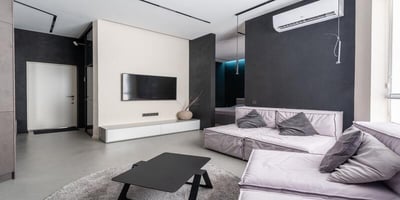Summer Comfort. What temperature should you set the air conditioner on in summer?
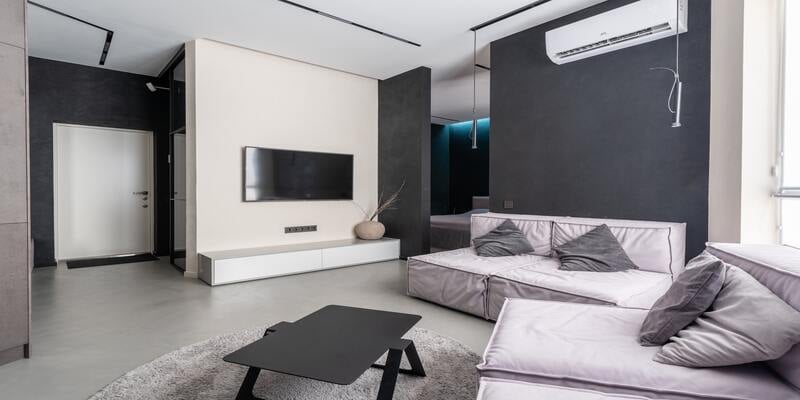
As the scorching summer sun beats down upon us, finding respite from the heat becomes an essential pursuit. One of the primary sources of relief is undoubtedly our trusty air conditioner, faithfully humming in the background to create a cool oasis within our homes.
However, have you ever wondered what temperature you should set your air conditioner to achieve the perfect balance between comfort, energy efficiency, and cost savings?
With this summer proving to be particularly hot and unforgiving, it's crucial to understand how to optimize your air conditioner settings to create a comfortable and cool environment while keeping your energy consumption in check.
In this article, we will explore the optimal temperature range for your air conditioner during the summer months and delve into the various factors to consider when determining the best setting for your personal needs.
By the end, you'll be equipped with valuable insights and practical tips to navigate the summer heat and enjoy the blissful refuge of a well-regulated indoor climate. So, let's embark on this journey to discover the secrets of summer comfort and learn what temperature to set your air conditioner in summer.
Understanding Optimal Temperature Range
When it comes to setting the temperature on your air conditioner during the summer, finding the optimal range is crucial for striking the perfect balance between comfort and energy efficiency. While personal preferences may vary, there are general guidelines that can help guide you towards an ideal temperature range.

The recommended temperature range for indoor cooling during the summer typically falls between 72 to 78 degrees Fahrenheit (22 to 26 degrees Celsius). However, it's important to note that this outdoor temperature range is not set in stone and can be adjusted based on individual preferences and external factors.
One critical factor to consider is humidity. High humidity levels can make a room feel warmer and more uncomfortable, even at lower temperatures.
In areas with high humidity, it's advisable to set your air conditioner to a slightly lower temperature within the recommended range to counteract the effects of moisture in the air.
On the other hand, if you live in a region with lower humidity and ac temperature levels, you may be able to set your air conditioner to a slightly higher temperature within the range without sacrificing comfort. This can help conserve energy and reduce your cooling costs.
Additionally, it's essential to consider the size of your living space and the number of occupants. Larger rooms or areas with more people may require a slightly lower temperature setting to ensure even cooling and maintain a comfortable environment for everyone.
Another aspect to keep in mind is the impact of outdoor temperatures. If you live in an extremely hot climate, you may need to set your air conditioner to a lower temperature to combat the intense heat. Conversely, in milder climates, you may be able to adjust your settings slightly higher while still enjoying a comfortable indoor environment.
Ultimately, finding the optimal temperature range for your air conditioner in the summer involves a bit of trial and error. It's essential to experiment with different settings to determine what works best for you and your household while considering factors such as humidity, room size, outdoor temperatures, and personal comfort preferences.
By understanding the factors that influence the optimal temperature range for an ac unit and making informed adjustments, you can create an environment that keeps you cool, comfortable, and energy-efficient during the sweltering summer months.
In the next section, we will delve deeper into the various factors to consider when choosing the temperature for your air conditioner, helping you make the most informed decisions for your summer comfort.
Factors to Consider
When it comes to choosing the temperature for your air conditioner during the summer, several factors should be taken into consideration.
These factors can help you determine the optimal temperature that aligns with your comfort, energy saving, efficiency goals, and overall well-being.
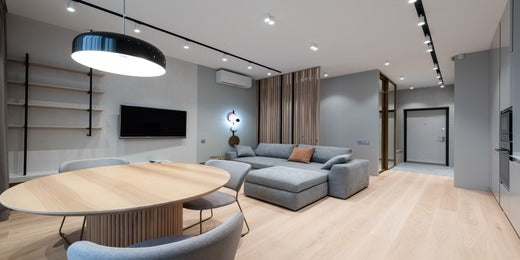
Here are some key factors to keep in mind:
- Comfort preferences: Everyone has their own comfort preferences when it comes to indoor temperature. Factors such as personal sensitivity to heat or cold, age, and health conditions can influence what feels comfortable to individuals. Consider the preferences of the household members and strive to find a temperature that suits the majority while still providing a comfortable environment.
- Energy efficiency and cost savings: Setting your air conditioner to a lower temperature may offer a quick burst of coolness, but it can significantly impact your energy consumption and utility bills. Higher temperature settings can help save energy and reduce costs. Look for the balance between comfort and energy efficiency by setting the temperature at the highest point within the recommended range that still maintains a comfortable environment.
- Environmental impact: Energy consumption directly affects the environment. By setting your air conditioner at a higher temperature, you can contribute to reducing greenhouse gas emissions and help combat climate change. Consider the environmental impact of your cooling choices and make conscious decisions to minimize your carbon footprint.
- Humidity levels: As mentioned earlier, humidity plays a vital role in how we perceive and tolerate heat. Higher humidity can make the air feel warmer and more oppressive. In areas with high humidity, it may be necessary to set the temperature slightly lower to maintain comfort. Alternatively, using a dehumidifier alongside your air conditioner can help alleviate the discomfort caused by excessive moisture in the air.
- Insulation and home design: The insulation of your home and the efficiency of your windows and doors can impact the effectiveness of your air conditioner. A well-insulated home can retain cool air and prevent hot air from seeping in, allowing for more efficient cooling. Ensure your home is properly insulated and seal any air leaks to optimize the performance of your air conditioning system.
- Room usage: Consider how each room in your home is utilized. Rooms that are frequently occupied or experience higher heat-generating activities (e.g., kitchens) may require a lower temperature setting. Meanwhile, unoccupied or lesser-used rooms can be set to a slightly higher temperature to conserve energy.
It's important to note that these factors may vary from person to person and from one household to another. Finding the right temperature for your air conditioner in the summer involves striking a balance between these considerations and energy costs.
Energy Efficiency and Cost Savings
Choosing the right temperature for your air conditioner during the summer not only affects your comfort but your home's temperature also plays a significant role in energy efficiency and cost savings.
By finding the optimal balance, you can keep your home cool while minimizing energy consumption and reducing your utility bills.
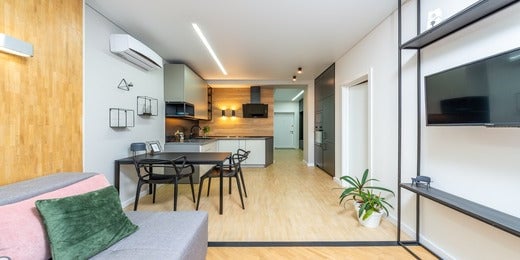
Here are some key considerations for maximizing energy efficiency and cost savings:
- Set temperature within the recommended range: As mentioned earlier, setting your air conditioner within the recommended temperature range of 72 to 78 degrees Fahrenheit (22 to 26 degrees Celsius) can help strike a balance between comfort and energy efficiency. Adjusting the temperature towards the higher end of the range allows you to save energy while still enjoying a cool environment.
- Utilize programmable thermostats or smart devices: Programmable thermostats or smart devices offer advanced features that can help optimize energy usage. Take advantage of their scheduling capabilities to adjust the temperature based on your daily routine. For example, you can program the air conditioner to run at a slightly higher temperature when you're away from home and lower it before you return, ensuring comfort without wasting energy.
- Practice temperature setbacks at night: Nighttime is typically cooler, and our bodies require less cooling during sleep. Consider increasing the temperature by a few degrees while you're asleep or use the "sleep mode" feature on your air conditioner to automatically adjust the temperature for a more energy-efficient operation.
- Take advantage of natural ventilation: In the evenings or early mornings when outdoor temperatures are cooler, turn off your air conditioner and open windows to let in fresh air. This natural ventilation can help cool your home without relying solely on your air conditioner, reducing energy consumption.
- Maintain your air conditioner: Regular maintenance, such as cleaning or replacing filters, can improve the efficiency of your air conditioner. A clean system can cool your home more effectively and efficiently, reducing energy waste. Additionally, ensure that your air conditioner is properly sized for your home, as an oversized unit can lead to excessive energy consumption.
- Consider zone cooling: If your home has multiple zones or rooms with varying cooling requirements, consider utilizing zone cooling systems. These systems allow you to set different temperatures for different areas of your home, enabling precise control and potentially reducing overall energy consumption.
Personal Comfort and Health
Setting the right temperature for your air conditioner during the summer goes beyond energy efficiency and cost savings—it directly impacts your personal comfort and health.
Maintaining an average air conditioning temperature for a comfortable indoor environment is not only essential for relaxation but also for your overall well-being.
Here's why personal comfort and health should be considered when determining the temperature for your air conditioner:
- Sleep quality: Temperature plays a significant role in achieving a good night's sleep. Research suggests that a cooler room temperature, typically between 60 to 67 degrees Fahrenheit (15 to 19 degrees Celsius), promotes better sleep by facilitating the natural drop in core body temperature during the night. Experiment with different temperatures to find the one that allows you to sleep comfortably and wake up refreshed.
- Productivity and focus: Extreme heat can lead to discomfort, fatigue, and reduced cognitive performance. By maintaining a cooler indoor temperature, you create an environment that promotes productivity and enhances your ability to concentrate on tasks at hand. Find a temperature that keeps you comfortable and alert, especially during working or studying hours.
- Allergies and respiratory health: Excessive humidity and warm temperatures can create favorable conditions for the growth of mold and other allergens. Setting your air conditioner to a temperature that keeps humidity levels in check can help prevent the proliferation of allergens and improve your indoor air quality. Additionally, cool air can provide relief for individuals with respiratory conditions, such as asthma or allergies.
- Heat-related health risks: Prolonged exposure to high temperatures can lead to heat-related illnesses, including heat exhaustion and heatstroke. It's important to maintain a comfortable indoor temperature to prevent overheating, particularly for vulnerable individuals such as the elderly, children, or those with underlying health conditions. Adjust your air conditioner to a temperature that keeps you cool and minimizes the risk of heat-related ailments.
- Thermal comfort: Personal comfort is subjective and can vary from person to person. Factors such as age, body composition, and activity levels can influence how individuals perceive and tolerate heat. Pay attention to your body's signals and adjust the air conditioner temperature to achieve a comfortable level that suits your needs.
Remember, the ideal temperature for personal comfort and health may differ from the general recommendations. It's essential to listen to your body and make adjustments accordingly.
Don't hesitate to experiment with temperature settings until you find the one that best suits your individual requirements.
Tips for Efficient Cooling
In addition to setting the right temperature on your air conditioner, there are several other strategies you can employ to maximize the cooling efficiency of your system.
By implementing these tips, you can enhance comfort, save money and energy, and optimize the overall performance of your air conditioner.

Here are some key tips for efficient cooling:
- Regular maintenance: Ensure that your air conditioner receives regular maintenance to keep it in optimal condition. Clean or replace filters as recommended to maintain proper airflow and prevent dust and debris buildup, which can hinder cooling efficiency.
- Seal windows and doors: Inspect your windows and doors for any gaps or leaks that can allow cool air to escape and hot air to enter. Seal these gaps with weatherstripping or caulking to improve energy efficiency and prevent unnecessary cooling loss.
- Utilize blinds or curtains: During the daytime, close blinds or curtains to block out direct sunlight. This helps reduce heat gain from the sun, keeping your home cooler and lessening the workload on your air conditioner.
- Optimize insulation: Adequate insulation is key to maintaining a cool indoor environment. Ensure that your home is properly insulated, especially in the attic and walls, to minimize heat transfer from the outside and enhance cooling efficiency.
- Utilize ceiling fans: Ceiling fans can help improve air circulation and create a wind-chill effect, making you feel cooler even at higher temperatures. Use ceiling fans in conjunction with your air conditioner to enhance comfort and potentially raise the temperature setting on your air conditioner.
- Utilize natural ventilation: Take advantage of cooler outdoor temperatures, especially during the evenings and early mornings, by turning off your air conditioner and opening windows to let in fresh air. Use natural ventilation to cool your home and reduce reliance on your air conditioner.
- Minimize heat-generating activities: Activities such as cooking, using certain appliances, and running hot water generate heat, increasing the workload on your air conditioner. Minimize these activities during the hottest parts of the day or use them strategically to prevent unnecessary heat buildup.
- Consider zone cooling: If your home has separate cooling zones, utilize them effectively. Close vents in unoccupied areas or rooms that don't require intense cooling, directing more airflow to the areas where cooling is needed the most. This allows for efficient use of your air conditioner's capacity.
- Use programmable thermostats or smart devices: Take advantage of advanced thermostat features that allow you to schedule temperature adjustments based on your routine. Set the temperature higher when you're away and lower it before you return to ensure comfort and energy efficiency.
- Seek professional advice: If you're unsure about optimizing the efficiency of your cooling system or need assistance with specific issues, consider consulting with a professional HVAC technician. They can provide guidance, perform maintenance checks, and offer recommendations tailored to your home's unique needs.
Remember to combine these strategies with the appropriate temperature settings discussed earlier to achieve the best results.
Brief summary
As the summer heat bears down upon us, setting the right temperature for your air conditioner becomes paramount for maintaining comfort, energy efficiency, and personal well-being.
By understanding the optimal temperature range for central air conditioning, considering various factors, and implementing efficient cooling strategies, you can create a cool and inviting environment while minimizing energy consumption and cost.
Finding the ideal temperature range within the recommended guidelines of 72 to 78 degrees Fahrenheit (22 to 26 degrees Celsius) serves as a solid starting point for what temperature to set air conditioner in summer.
However, it's essential to account for factors such as humidity, personal comfort preferences, energy efficiency goals, and health considerations when determining the best temperature for your air conditioner.
Striving for energy efficiency and cost savings doesn't mean sacrificing personal comfort. Utilize programmable thermostats or smart devices to keep energy bills and create temperature schedules aligned with your daily routine. Take advantage of natural ventilation, ceiling fans, and zone cooling systems to optimize cooling efficiency while minimizing energy usage.
Remember to prioritize personal comfort and health by best ac temperature, considering factors such as sleep quality, productivity, allergies, and heat-related health risks. By maintaining an appropriate indoor temperature, you can enhance sleep, promote focus, and safeguard respiratory health, especially for vulnerable individuals
Efficient cooling goes beyond temperature settings. Regular maintenance, proper insulation, sealing windows and doors, and minimizing heat-generating activities all contribute to an optimized cooling system. Implementing these strategies alongside temperature adjustments can significantly improve the energy efficiency and effectiveness of your air conditioner.



































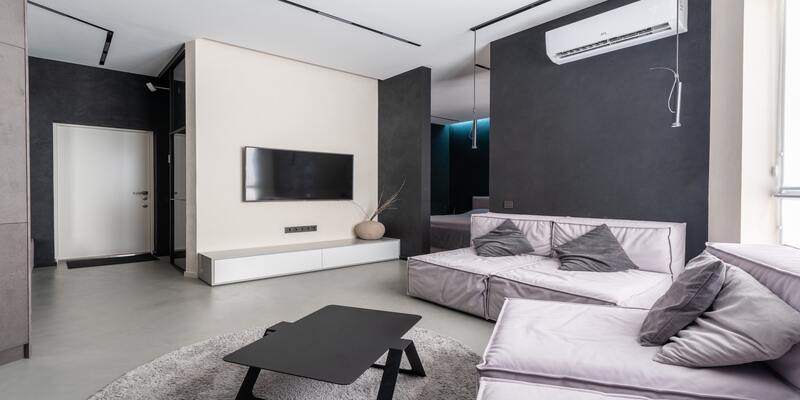
.jpg?height=200&name=photo_2024-05-14_19-52-55%20(1).jpg)
.jpg?height=200&name=photo_2024-06-05_12-27-19%20(1).jpg)
.jpg?height=200&name=photo_2024-05-31_14-45-21%20(1).jpg)
